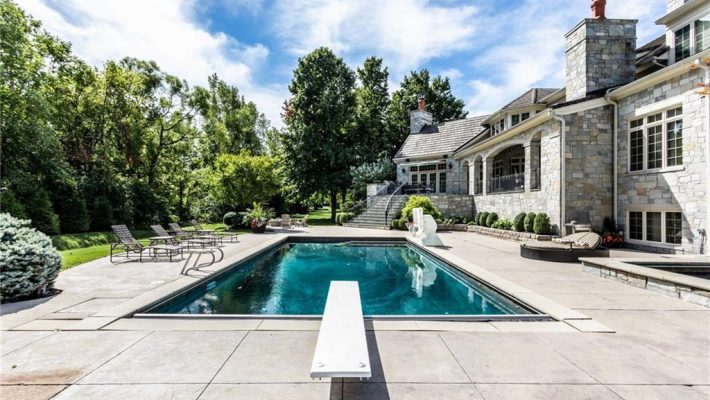To say that the housing market has been competitive lately is a massive understatement. Sellers are regularly receiving multiple bids on their listings, often in record time, and it’s not unusual for several of those offers to soar well above the asking price.
While that’s rough on buyers, it seems great for the sellers – except there’s a hitch: The house still has to get through a lender’s appraisal in order for the buyers to get financing. If their offer is more than the lender thinks the home is worth, there may be an appraisal gap.
Appraisal Gaps Are Becoming More Common
An appraisal is, for lack of better wording, a licensed appraiser’s opinion of value for the property. The appraiser uses the selling prices of similar properties in the area and the home’s overall condition and features.
Unless a buyer has an all-cash offer on the table, their bid is usually contingent on the home’s ability to get an appraisal that’s high enough to assure the lender that they could get their money out of the home if they have to someday foreclose.
The lender will send an appraiser to inspect the property and run comparisons (“comps”) to recent sales of similar homes. Then, using their expertise, they arrive at a figure that is either above or below what the buyers need to finance. If the appraisal comes in at or above the necessary dollar amount – hurrah! The sale can proceed. If it doesn’t, you’ve got a problem.
Unfortunately for everyone, appraisal gaps are becoming increasingly common. Here’s why:
- Buyers are anxious, so they’re inclined to make their bids as big as they can afford.
- The real estate markets in many areas have shown skyrocketing prices, partially because there aren’t a lot of homes on the market right now.
- Appraisers may be looking back and mixing both extremely recent sales with slightly older sales in their comps, and there are some big disparities between the two. That can easily happen when home values rise exceptionally fast.
- A spate of short sales or foreclosures in your local market can artificially lower the average price of homes in the area and affect the comps.
- Some appraisers may not believe that current real estate market conditions will last, so they’re taking a conservative approach to their calculations.
In their excitement to get a bid (or several) over their asking prices, most sellers aren’t thinking about potential problems with the appraisal and their buyer’s asking price – and that can be a disaster. If the buyer’s financing falls through because of an appraisal gap, the seller can end up missing out on other sales and be stuck in their home when they’re ready to go.
Appraisal Gap Coverage Can Give Buyers and Sellers Some Security
While all-cash offers aren’t exactly rare, the vast majority of today’s homebuyers need to finance their homes through a mortgage. When an appraisal gap happens, that can prove majorly problematic.
For example, imagine that a seller wants $180,000 for their home. The buyer, motivated by their love for the house and a conscious regard for their competition, offers $200,000. They only have $20,000 to put down on the house, so their offer is contingent on their ability to borrow the remaining $180,000. If the appraisal comes back at just $190,000, that leaves a $10,000 gap that the buyer may not be prepared to cover.
Buyers generally have a few different options when this happens. They can:
- Walk away from the deal (assuming they have an appraisal contingency in place) and go back to hunting for another home
- Pay the difference between the appraisal and their bid out of their own pocket, if they have the money to do so
- Try to come up with the additional money by using retirement funds or gifts from family members
- Ask the lender to reconsider the appraisal, usually by giving the lender additional information the appraiser didn’t have access to before, such as more recent comparable sales
- Putting less down on the house than what originally discussed with the lender
- Try to renegotiate with the seller to close the gap
Most of these scenarios offer thin hope – or none at all – for the deal to go through, and that’s bad news for the seller as much as it is for the buyer.
Plus, informed sellers may not be inclined to take the biggest offer on the table for fear of an appraisal gap and a busted deal. That means sellers willing to bid over the asking price may be shut out of a deal just because their offers are “too good to be true.”
This is where appraisal gap coverage can help balance things out for both the buyer and seller. Essentially, this is a clause written into the buyer’s offer in which the buyer guarantees that they will pay any difference between the home’s appraised value and their bid up to a specified amount.
This can be a win-win for both buyer and seller. The buyer is forced to think critically about what kind of bid they can actually afford, while still allowing them to walk away from the purchase if the appraisal gap is larger than they expect. Meanwhile, the seller has less fear that the buyer will be back to renegotiate or walk away if the appraisal is lower than expected, and that makes the offer both more attractive and secure.
Experienced Guidance Can Help You Work Through Complex Real Estate Issues
Whatever side of the home-buying equation you expect to be on this spring, working with a real estate agent that understands your concerns in a somewhat unpredictable real estate market can make the process a lot easier to understand.




